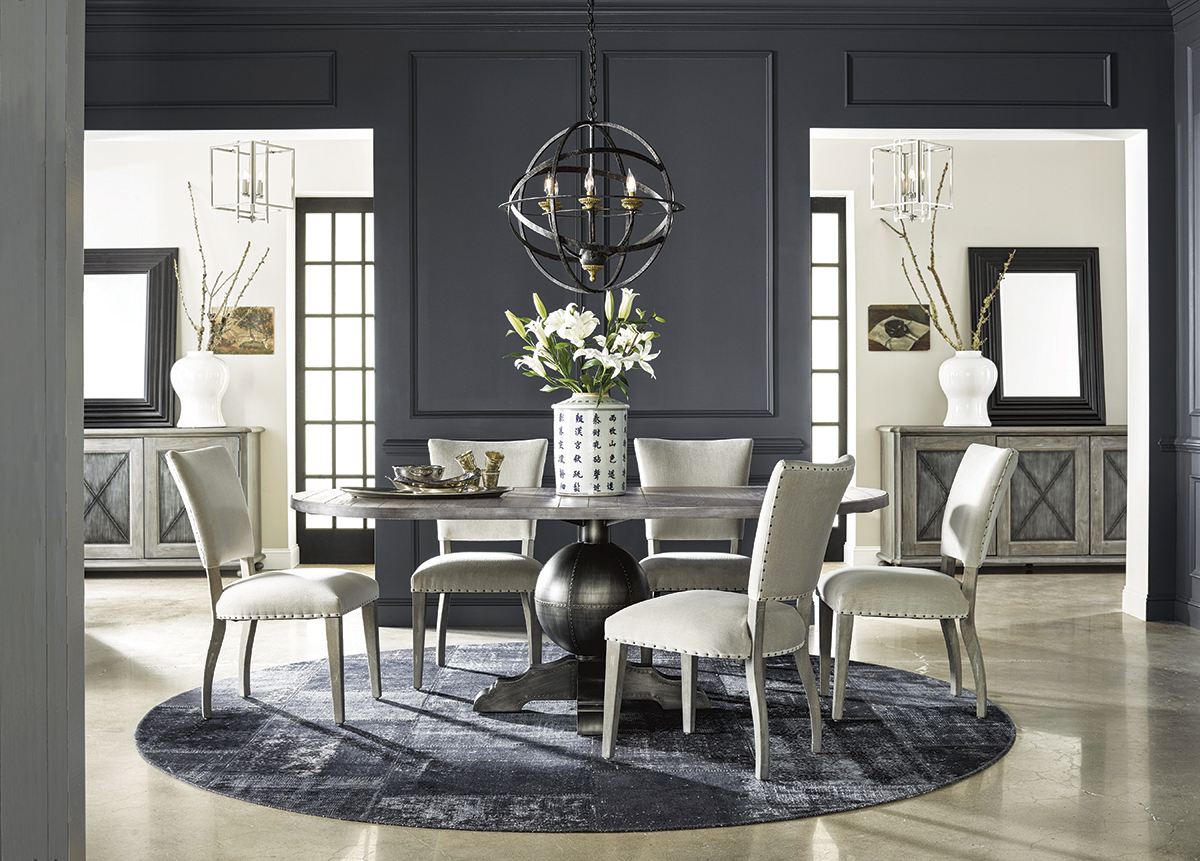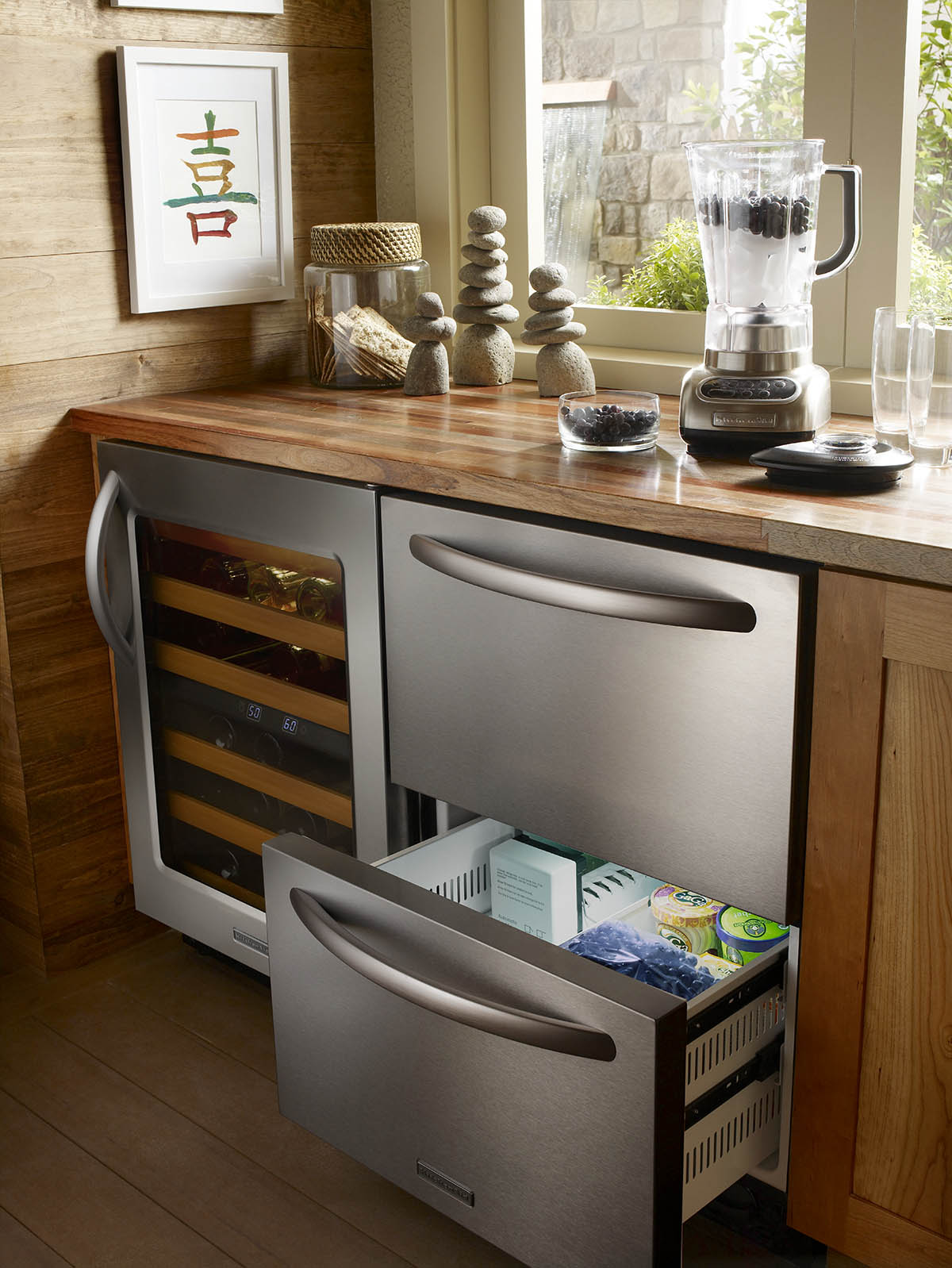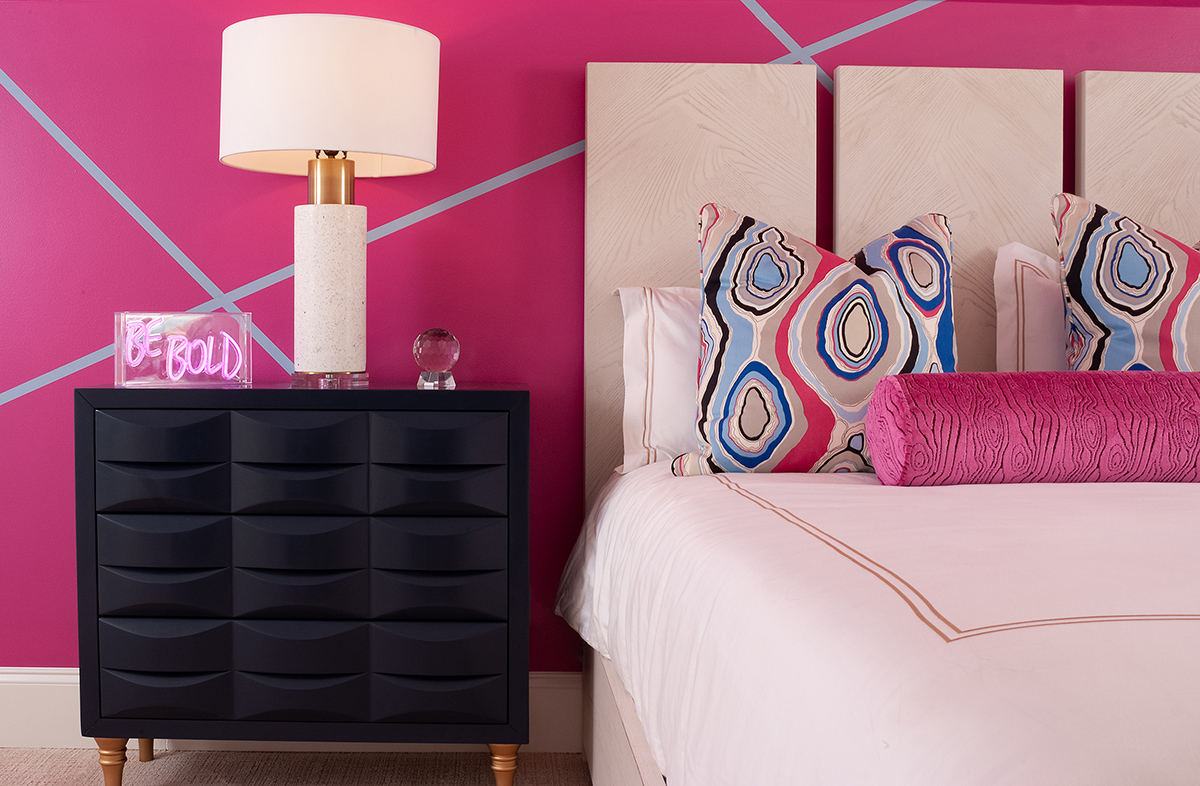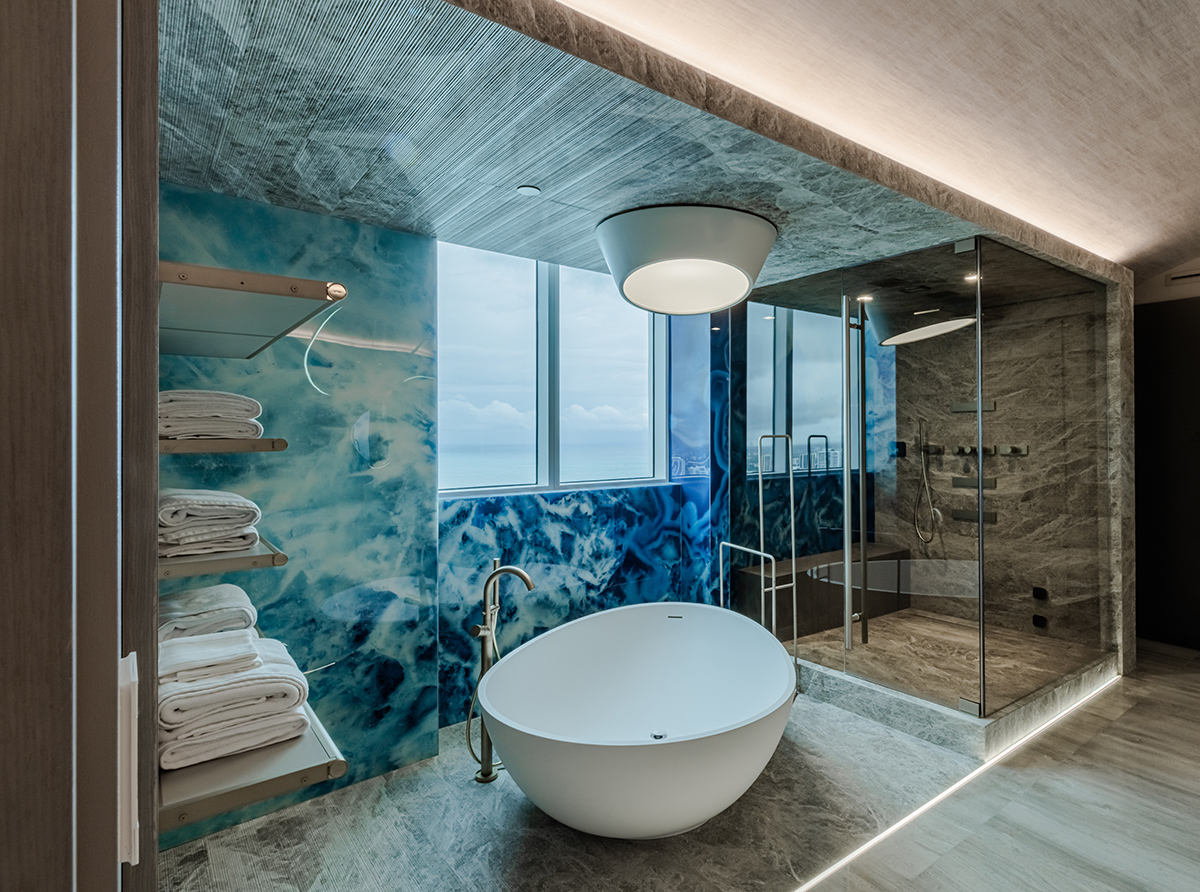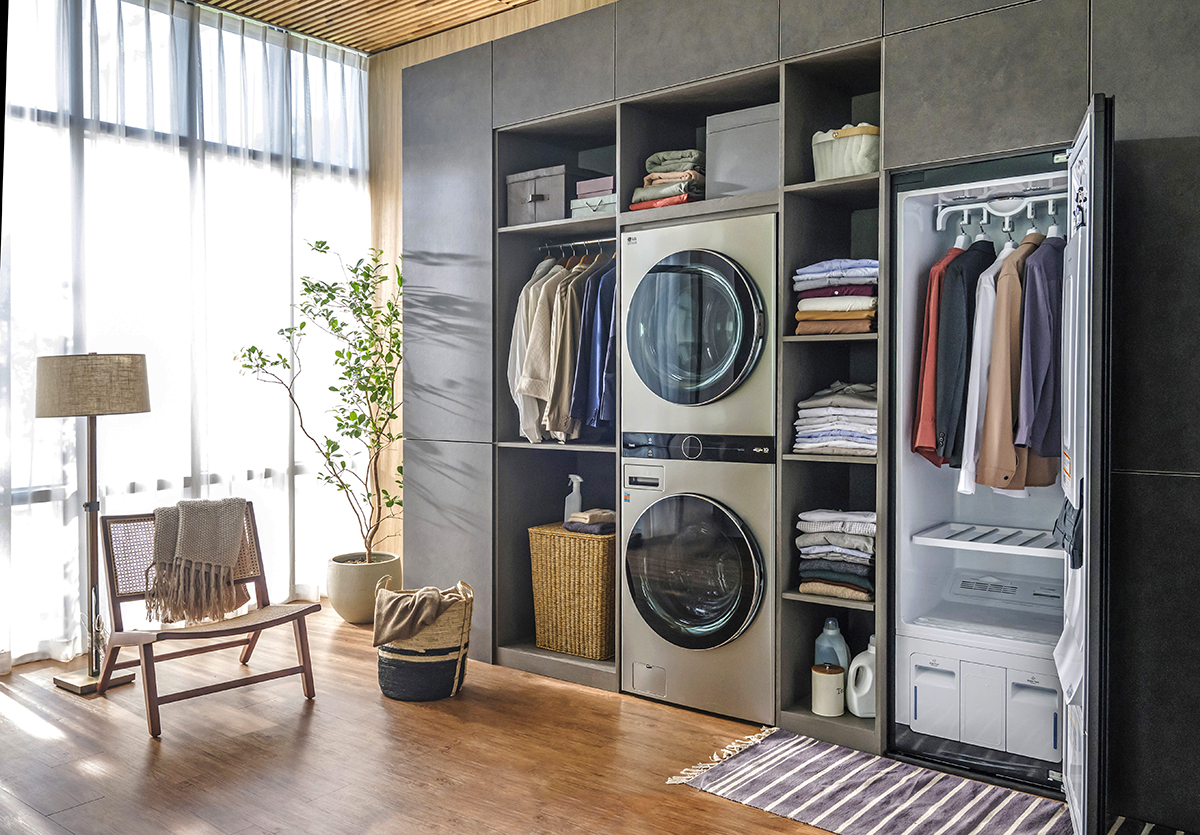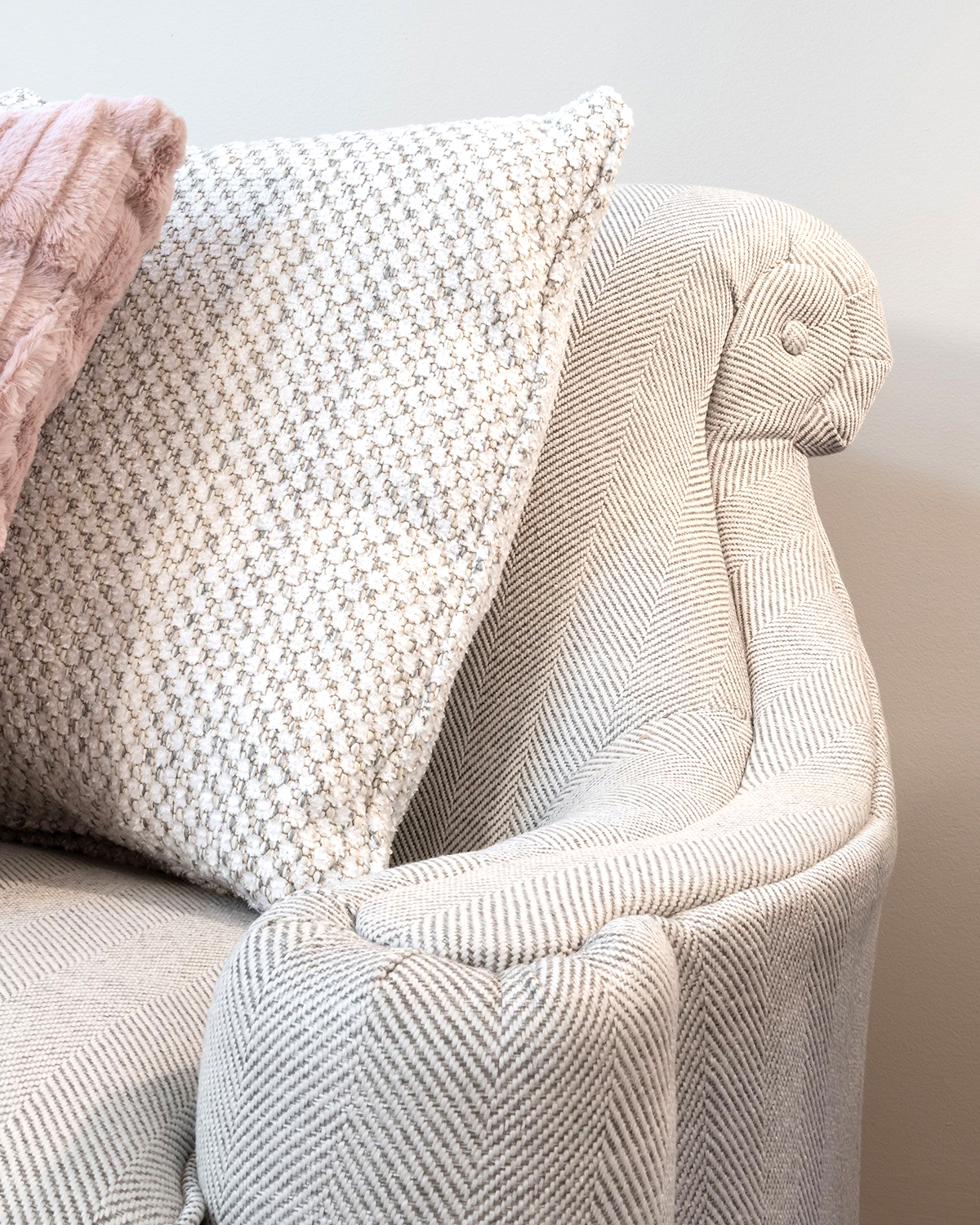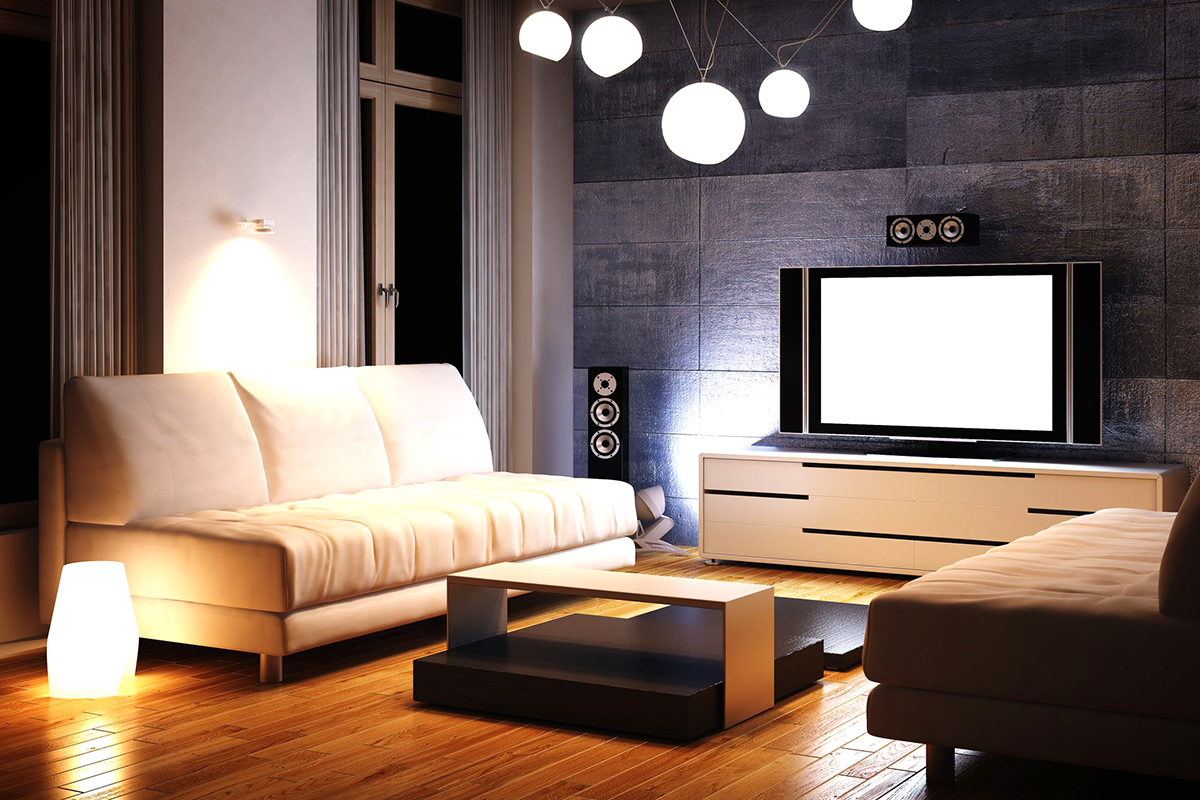WRITER | SAMANTHA BAKER
PHOTOS | UBU HOME FURNISHINGS
When it comes to choosing a new dining table, it is good to do your research. Careful consideration of style, construction, and budget is all that it takes to select the perfect dining table.
Select a Style
Start by identifying your style preference. A great way to do this is by considering the other elements of the room where you will put the table. The table should complement other pieces and accents in the room. Do not let the latest trends sway you to purchase something eye-catching and fun that is not right for your space.
Here are a few style tips:
- Different finishes can be labeled as a specific style, but adding different elements can create a brand new look. For example, oak is very traditional, but a washed grey or warm ivory finish will look farmhouse chic. Metal is raw and industrial, but with the right accents and color, can be designed to look modern.
- Consider the visual weight of the table in the actual room. A large base with a thick, heavy top will make the room appear smaller. A glass top will lighten the visual weight and create an illusion of space due to the transparency of the glass.
- A table with leaves offers versatile seating arrangements, from a large Thanksgiving gathering to casual Monday night dinner.
- Pub-style height is a good option for more casual seating.
- A helpful guide to determine the appropriate size table is to plan for 22 to 24 inches of arm space for each person seated.
Consider Quality
Once you have decided on a basic style, continue refining your selection by comparing the quality of construction with your determined budget. Long-term durability depends on the material and intended use. Consider what everyday life looks like for you. Will this be used as a breakfast nook, to host elegant dinner parties, or lunch with the grandchildren? Solid wood such as oak, birch, pine, and walnut is commonly used for dining tables due to it its durability. Paint, stain, or a catalyzed finish can add extra protection against water rings, scratches, and everyday life. Be an informed shopper and ask questions about expected quality and wear. A veneer table offers a similar look to solid wood but is less expensive. For quality veneer, it is the underlying core that determines long-term durability. Look for solid wood names such as birch veneer or walnut veneer; the higher cost may be worth the investment.
Finishing Touches
Some other options with variable price tags may be just what you had in mind for a finishing touch in the dining room. Glass tabletops can be clear, tinted, or frosted. Glass has a unique look but can scratch, chip, or perform poorly due to moisture or heat. However, it could be well worth the price for just the right look. Manmade materials such as plastic or laminate offer a sleek, modern look. This is a good option for minimal upkeep and heavy use as these surfaces do not soak in moisture. Manmade materials are often less expensive as well.
A fun way to add a little texture to your dining room is a stone-top table such as marble, quartz, or concrete. Stone is sustainable but cannot be fixed if cracked or split. It also absorbs moisture, which may result in stains. Metal bases such as brass and steel can stand up to all the under-the-table traffic whether unfinished, painted, or lacquered. It may be a challenge to find an all-metal table, but a table with a metal base or legs can really add character to your space.
Now that you have done your homework on style, construction, and budget, take what you’ve learned and enjoy the adventure of shopping for the dining table that fits you best. Have fun!


